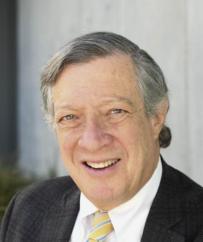As Los Angeles grapples with budget constraints, civic fragmentation, and mounting pressure to deliver transformative infrastructure ahead of the 2028 Olympic Games, in this op-ed for The Planning Report, former senior deputy for Economic Development for LA County and real estate investor Dan Rosenfeld revisits the civic pride and creative momentum that defined the 1984 Olympic Games. Rosenfeld asks whether today’s fractured, resource-strained Los Angeles can recapture that same unity of vision, design, and purpose and challenges civic and cultural leaders to embrace the opportunity—and responsibility—of once again putting LA’s best face forward on the global stage.

“Preparations for our next Olympic Games appear to be taking place almost in secret, if they are taking place at all. No vivid colors, no bursts of cultural creativity, no compelling social unification."
Angelenos remember the 1984 Olympics as a joyous time.
Everyone seemed enthused, not just the sports community, but artists, business people, community members of all types.
It was a moment of friendship: people smiled, even the traffic seemed to abate.
The build-up to the 1984 Olympics was a time of great resolve, as a wide range of designers,contractors and vendors worked together under tight budgets and schedules, under the truly inspired leadership of Peter Ueberroth and his colleagues. The architecture and graphic design communities, in particular, led by Deborah Sussman, Paul Prejza, Jon Jerde and many others, mobilized to create a ’look’ for Los Angeles that was culturally perfect, visually bold and appropriately inexpensive to build. Banners of magenta, chrome yellow and other colors evocative of our City’s Latin heritage were splashed onto banners, building walls and even cardboard tubes, which became museum-quality collectables when the Games were done.
The Olympic Arts Festival in 1984 under Robert Fitzpatrick was as epic as the Games themselves, bringing world-class talent such as Pina Bausch and Maguy Marin to LA for the first time.
And the entire spectacle was pulled off with perfection, even in the absence of the soon-to-be-extincted Soviet Union. It was a global coming out party, with LA at the hub. A woman athlete from Morocco, Nawal El Moutawakel, won the 400 meter hurdles, an outcome so unexpected that Olympic officials had to scramble to find a recording of her national anthem for the medal ceremony. She was the first Arab, African or Muslim woman to win gold.
The Olympic spirit of good-feeling lingered, a source of great pride to those who participated and to those who just watched. It brought Los Angeles - a city known for its vast breadth, both physically and culturally - together as never before.
And, in a larger sense, the 1984 Olympics were an apotheosis for Los Angeles, culminating four decades of near constant growth, prosperity and, above all, world-class creativity in so many fields: science, aerospace, film, fashion, food, music, architecture and other ‘lifestyle arts.’ Los Angeles had become a cultural paragon for the world.
So, now we approach 2028.
Preparations for our next Olympic Games appear to be taking place almost in secret, if they are taking place at all. No vivid colors, no bursts of cultural creativity, no compelling social unification. We send Tom Cruise to Paris to represent us? On a motorcycle? We assign the arts festival to a little-known soap opera sponsor?
In contrast with 1984, we live now in a city almost bankrupted by public employee pensions, extreme income stratification, serious housing shortages, intense traffic, empty reservoirs and a collective malaise.
Time is running short. With three years remaining, there is still a chance for the 2028 Games to pull us together again. Can we do it?
- Log in to post comments



